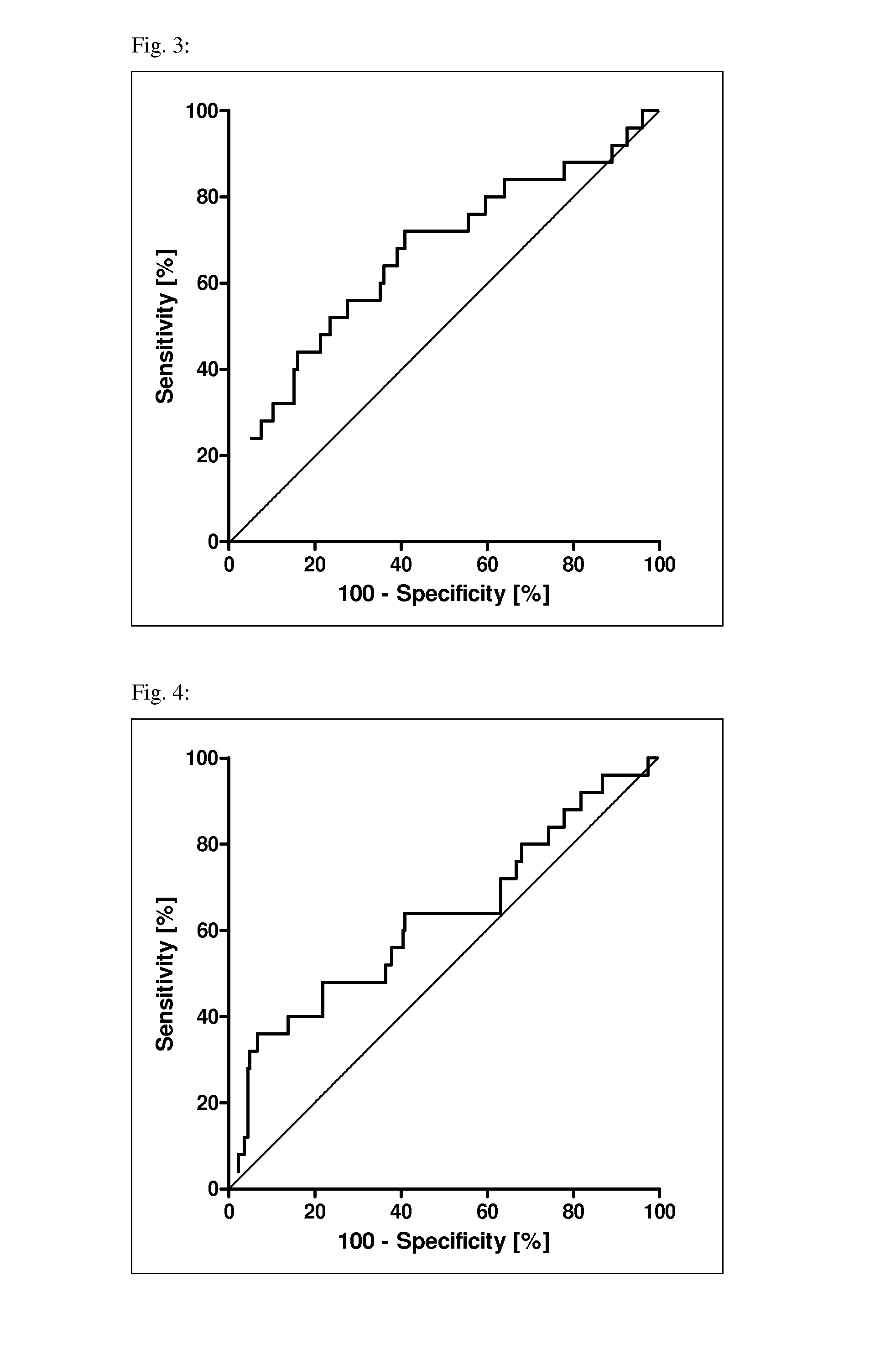Markers for the prognosis and risk assessment of pregnancy-induced hypertension and preeclampsia
a technology of pregnancy-induced hypertension and risk assessment, applied in the field of clinical diagnostics, can solve the problems of maternal and fetal morbidity, low platelet count, and elevated liver enzymes, and achieve the effect of reducing the risk of pregnancy-induced hypertension and preeclampsia
- Summary
- Abstract
- Description
- Claims
- Application Information
AI Technical Summary
Benefits of technology
Problems solved by technology
Method used
Image
Examples
examples
Study Population
[0060]A total of 323 patients were included into the retrospective study. These patients were diagnosed to suffer from early-onset preeclampsia (n=25), late-onset preeclampsia (n=25) and pregnancy induced hypertension (P1H) (n=25). 225 pregnant women without these diseases served as controls.
[0061]EDTA-samples were taken at the time of each prenatal visit, which is held at 11 to 14 weeks of gestation. At that time all patients included into the study were asymptomatic and did not show any signs or symptoms for preeclampsia or PIH. All pregnant women signed a consent form approved by King's College Hospital Ethics Committee.
[0062]A patient was diagnosed to suffer from preeclampsia if hypertension (systolic or diastolic blood pressure of ≧140 and 90 mm Hg, respectively) and proteinuria (protein excretion of >300 mg in a 24 h urine collection, or a dipstick of ≧2+) was detected after 20 weeks of gestation. Patients with the diagnosis of preeclampsia were further classif...
PUM
| Property | Measurement | Unit |
|---|---|---|
| Time | aaaaa | aaaaa |
| Time | aaaaa | aaaaa |
| Length | aaaaa | aaaaa |
Abstract
Description
Claims
Application Information
 Login to View More
Login to View More - R&D
- Intellectual Property
- Life Sciences
- Materials
- Tech Scout
- Unparalleled Data Quality
- Higher Quality Content
- 60% Fewer Hallucinations
Browse by: Latest US Patents, China's latest patents, Technical Efficacy Thesaurus, Application Domain, Technology Topic, Popular Technical Reports.
© 2025 PatSnap. All rights reserved.Legal|Privacy policy|Modern Slavery Act Transparency Statement|Sitemap|About US| Contact US: help@patsnap.com



